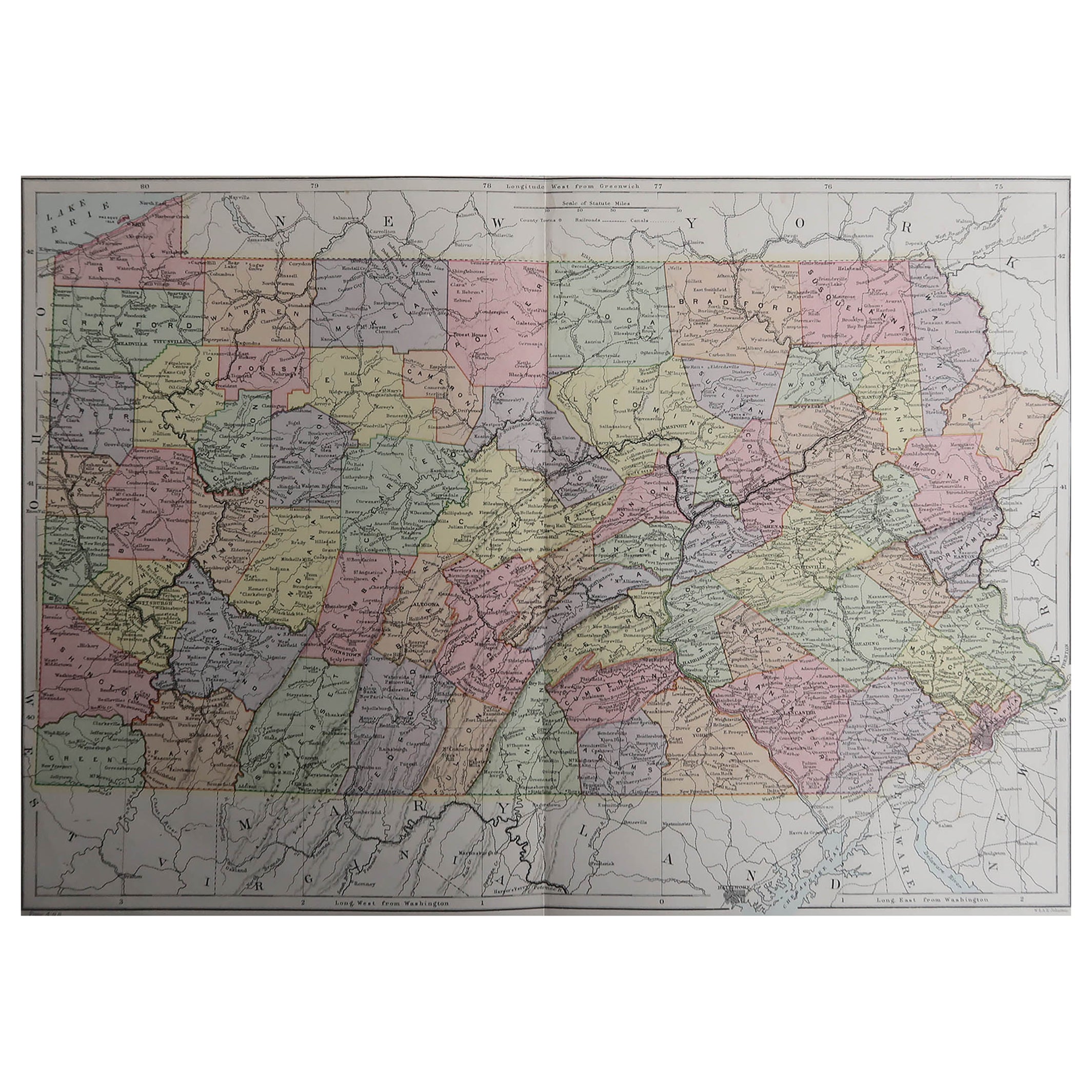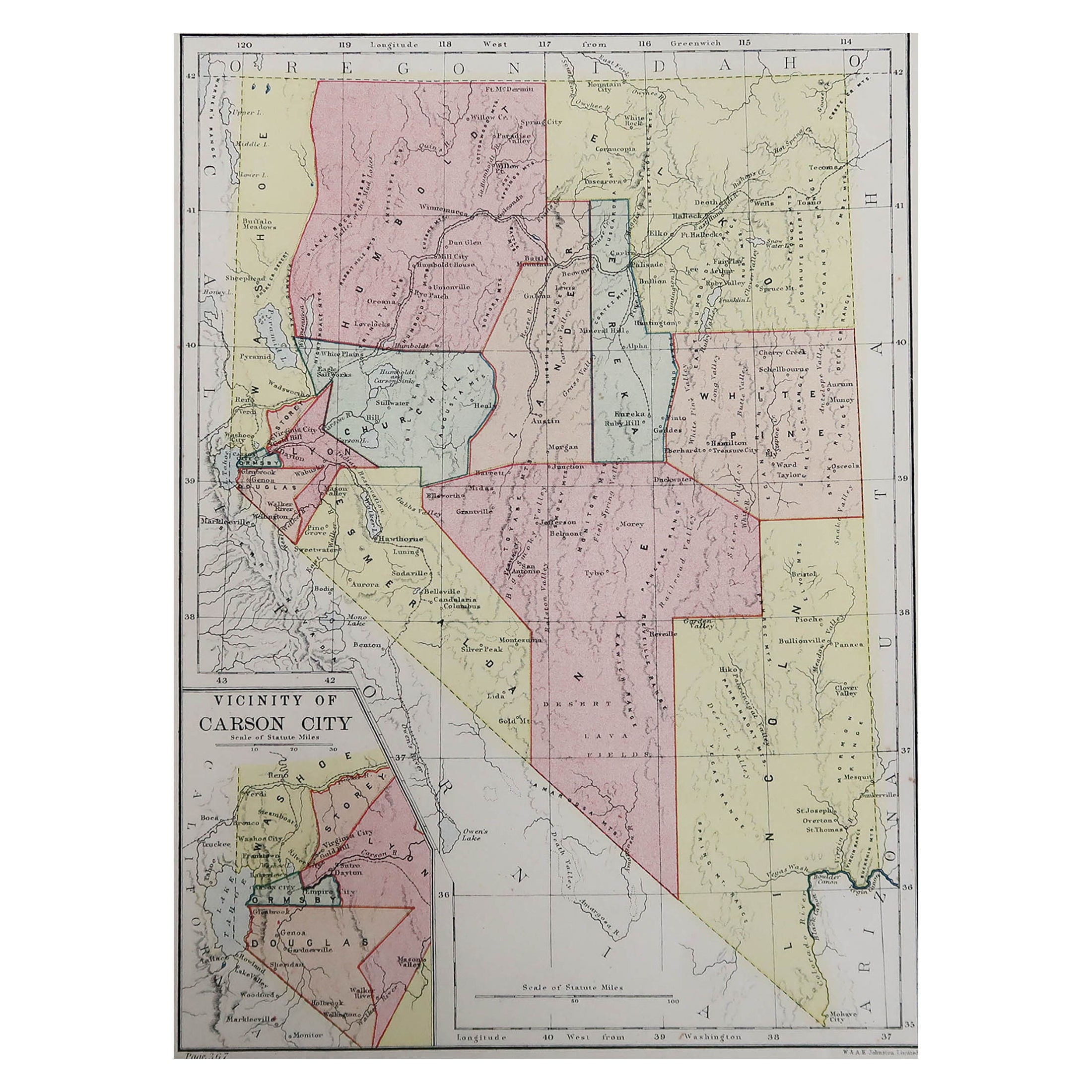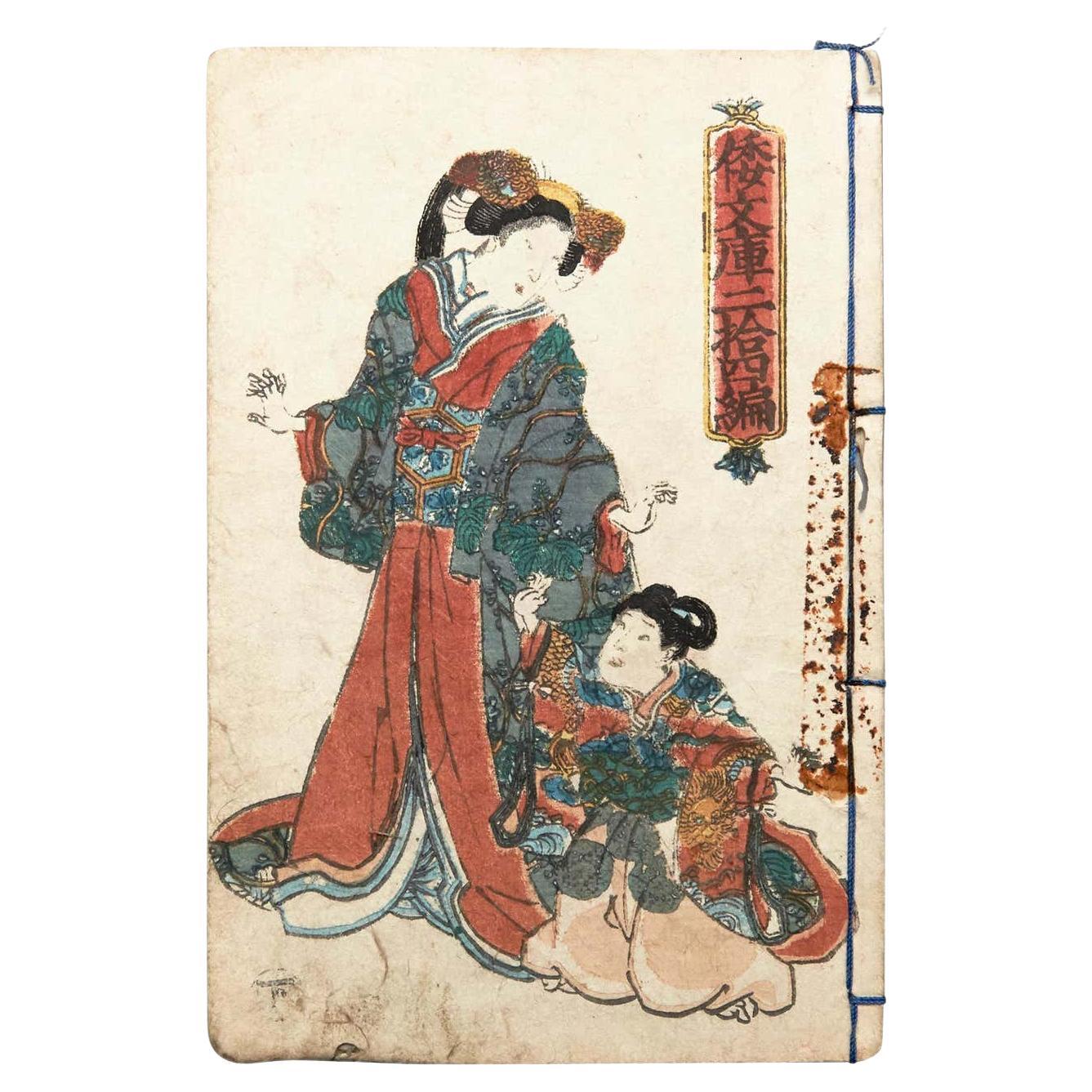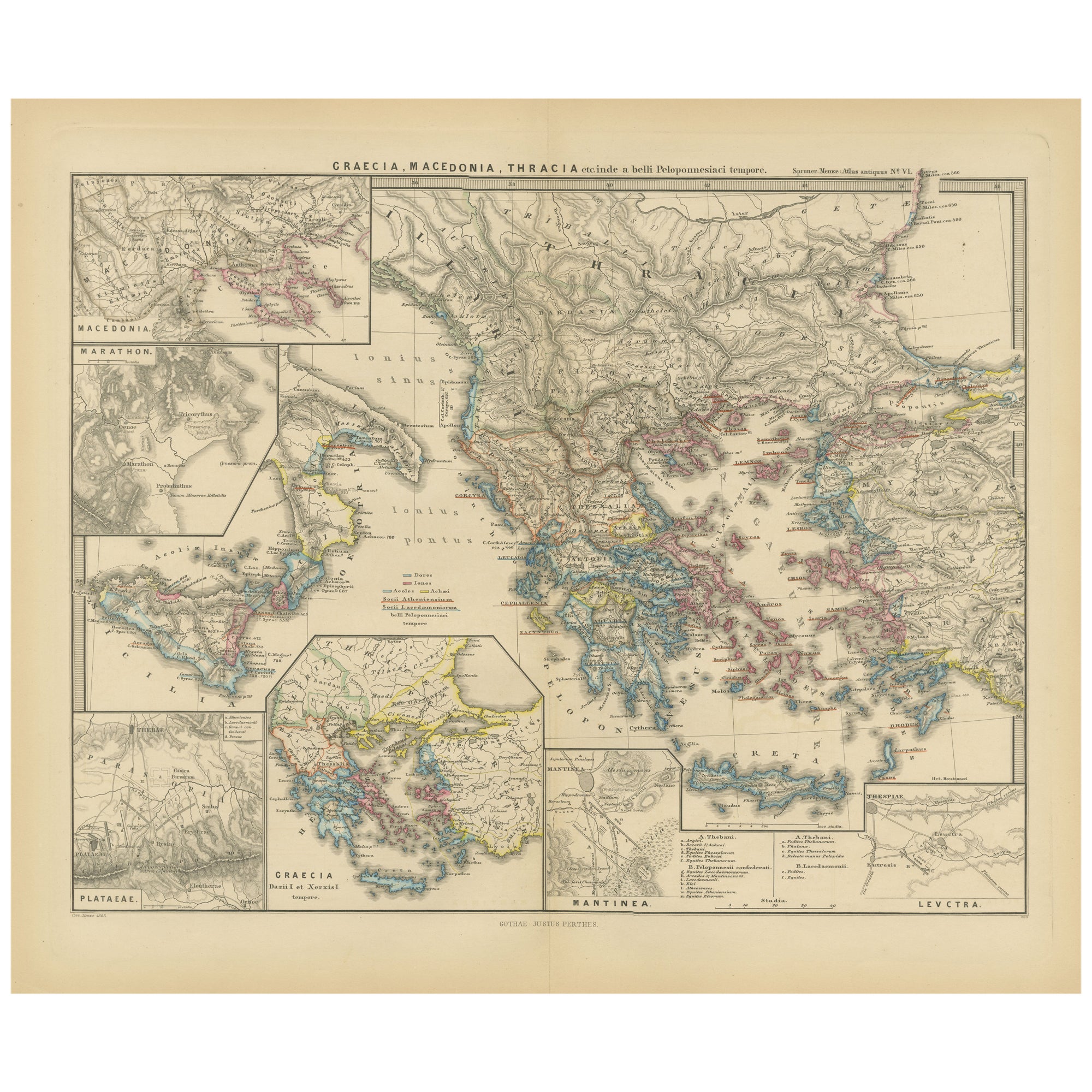Items Similar to Ambrotype Of A Civil War Wife 1860
Want more images or videos?
Request additional images or videos from the seller
1 of 12
Ambrotype Of A Civil War Wife 1860
About the Item
Identical on both front and back, this brown gutta percha case has a lovely floral design with minimal geometric designs. The gilt stamped brass inner frame and inner mat are in fine condition, firmly placed in the burt-out velvet lining. The gutta purcha cases were made from a compressed combination of shellack and sawdust. This period case has survived in excellent condition.
When families gather, there's always a chance that someone will pull out the old family photos.
Vintage Instamatic snaps and Polaroids, sepia-tone studio portraits of generations past, possibly even an ambrotype.
What's an ambrotype? It's a specific type of photo that was widely popular for a brief time. Chances are you've seen one-maybe even found one among your family's keepsakes -but you might not have known its name until now.
The history of commercial photography starts with the daguerreotype, invented in France by Louis Jacques Mandé Daguerre in 1839. In that process, a silver-coated copper plate is treated with chemicals and placed inside a darkened camera.
When the camera lens is opened to light, the plate is exposed and the image is captured.
This ability to capture an unadulterated image from life was revolutionary, but taking and processing a daguerreotype was time-consuming and expensive. Thus, daguerreotype photography studios catered mainly to wealthy and celebrated clients; the same people who might have had their portraits painted in oils.
For ordinary folks, preserving one's visage for posterity tended to be cost-prohibitive until the introduction of the ambrotype (also called a collodion positive) in 1853. Devised by British sculptor Frederick Scott Archer and perfected and patented by Boston inventor/photographer James Ambrose Cutting (who gave the ambrotype its name), the ambrotype was a photograph exposed directly onto a glass plate, which was then backed with black paint or fabric to reveal its shading and contrast.
That technology spread surprisingly fast, with daguerreotype studio photographers switching to ambrotypes, new photography studios opening in cities and itinerant photographers traveling the countryside to offer their services. Photo historian and archivist Gary Saretzky estimates that more than a thousand photographers worked in New Jersey in some capacity during the 19th century.
Most left behind little more than a name and occupation listed in a municipal directory, but some left a lasting legacy. Among those whose work you'll see in prominent collections, including the Library of Congress, are Augur Judson (A. Judson & Co.) and Orrin Benjamin (O.C. Beniamin) of Newark.
Ambrotypes had other advantages over daguerreotypes as well. Because a daguerreotype was made on a mirrored surface, it had to be positioned just so to be viewed properly.
"Ambrotypes are flatter and more even with the image right at the surface so it's easier to view," Hewes says.
Curators, historians and collectors appreciate ambrotypes because they can be dated to a specific period beginning in 1853 and ending around the late 1860s with the advent of tintypes
-an even newer, cheaper and thus more ubiquitous form of photography. As you might expect, given the time period, hundreds of ambrotype portraits were taken of Union and Confederate soldiers from the Civil War. Plenty of famous people sat for ambrotypes as well. One particularly rare example is an 1860 ambrotype of Abraham Lincoln, now in the Newark Public Library Special Collections.
Ambrotypes were made in standard sizes ranging from the Imperial or Mammoth Plate (larger than 6½ by 8½ inches) to a Sixteenth Plate (1½ by 1¾ inches), with the pocket-sized Sixth Plate (2¾ by 3¼ inches) and Ninth Plate (2 by 2½ inches) most common.
- Dimensions:Height: 3.75 in (9.53 cm)Width: 3.25 in (8.26 cm)Depth: 0.875 in (2.23 cm)
- Style:High Victorian (Of the Period)
- Materials and Techniques:
- Place of Origin:
- Period:
- Date of Manufacture:1860’s
- Condition:Wear consistent with age and use. In good antique condition having no major issues.
- Seller Location:New Orleans, LA
- Reference Number:1stDibs: LU6628236584312
About the Seller
4.8
Platinum Seller
These expertly vetted sellers are 1stDibs' most experienced sellers and are rated highest by our customers.
Established in 2007
1stDibs seller since 2022
89 sales on 1stDibs
Typical response time: 4 hours
- ShippingRetrieving quote...Ships From: New Orleans, LA
- Return PolicyA return for this item may be initiated within 3 days of delivery.
Auctions on 1stDibs
Our timed auctions are an opportunity to bid on extraordinary design. We do not charge a Buyer's Premium and shipping is facilitated by 1stDibs and/or the seller. Plus, all auction purchases are covered by our comprehensive Buyer Protection. Learn More
More From This SellerView All
- 19th C. English Carved Mahogany Jewelry Box in the Form of a Miniature DresserLocated in New Orleans, LAA very unusual and handsome English carved mahogany Gentlemens jewelry box in the form of a miniature dresser, the upper section with an upward slidi...Category
Antique 1870s English Late Victorian Models and Miniatures
MaterialsBrass
- Antique French Art Nouveau Copper & Brass Cross CrucifixLocated in New Orleans, LAAntique French Art Nouveau copper and brass alter cross with silver tone Jesus and sacred heart.Category
Antique Early 1900s French Art Nouveau Religious Items
MaterialsBrass, Copper, Spelter
- 19th C. French Provincial Carved Cherry Prie-Dieu with Woven Rush SeatLocated in New Orleans, LAA charming 19th century French Provincial prie-dieu/chair of carved cherry wood and handwoven rush seating, having lovely, scalloped details. The top chair seat pulls up in order to ...Category
Antique 1850s French French Provincial Religious Items
MaterialsRush, Cherry
- Antique 19th Century French Coal IronLocated in New Orleans, LAA charming antique 19th century French iron and wood coal iron with an unusual dolphin decorated iron and wood handle from the provinces of France.Category
Antique 1880s French French Provincial Historical Memorabilia
MaterialsIron
- An Original Pair Of English Watercolor/Sketches C. 1854, 1855, Ellen DumbletonLocated in New Orleans, LATwo original English watercolor/drawings circa 1854,1855, Ellen Dumbleton, from her sketchbook, Humble House and Summer house, Hall Grove. Beautifully pr...Category
Antique 1850s English High Victorian Decorative Art
MaterialsGesso, Glass, Giltwood, Paper
- Pair of Antique French Salins Oyster PlatesBy SalinsLocated in New Orleans, LAFrench Salins Seafoam Green Mid Century Hand Painted Faience Majolica Oyster Plates. An oyster plate collectors "must have" these mid century modern beauties boast a beautiful col...Category
Antique Early 1900s French Platters and Serveware
MaterialsPottery
You May Also Like
- Civil War Socket BayonetsLocated in Norton, MAThree Socket Bayonets. One is a P-53 Civil War era marked "DEAKIN" and has a crown over 53, one is a "US" stamped dull tip, and the last is unmarked or stamped.Category
Antique 19th Century American Arms, Armor and Weapons
MaterialsMetal
- Civil War Union Solider in Full Dress, Sword & Cannon, Union Gutta Percha CaseLocated in West Palm Beach, FLCivil War portrait, union solider in landscape in 'Union' Gutta Percha case Rare and unusual, the Ambrotype of a Union solider, in full uniform, with sword, standing next to a cannon and house. Encased in ornate Gutta Percha Case with Union Flags...Category
Antique 19th Century North American High Victorian Historical Memorabilia
MaterialsGlass
- "Rally Freemen!..." Civil War Recruitment BroadsideLocated in York County, PA"RALLY FREEMEN! …COME ONE! COME ALL! AND SHOW YOUR LOVE FOR THE BEST COUNTRY ON THE FACE OF THE EARTH." A CIVIL WAR RECRUITMENT BROADSIDE FOR THE...Category
Antique 1860s American Political and Patriotic Memorabilia
MaterialsPaper
- Civil War Panorama of the Seat of War by John Bachmann, Antique Print circa 1864Located in Colorado Springs, COPanorama of the seat of war. Bird's-eye View of Virginia, Maryland, Delaware and the District of Columbia. This third state of this fascinating bird's eye view of the northernmost p...Category
Antique 1860s American Maps
MaterialsPaper
- Rare AMERICAN OFFICER'S SWORD - pre Civil WarLocated in TEYJAT, FRThis is a very rare American Officer's sword that dates back to the period before the American Civil War. The sword has a 79cm straight blade with a flat back, counter-edged and gut...Category
Antique Early 19th Century French Arms, Armor and Weapons
MaterialsMetal
- Old Hand-Colored Engraving of a Farmer's Wife from Fribourg, Switzerland, c.1860Located in Langweer, NLAntique costume print titled 'Fribourg'. This print depicts a farmer's wife from Fribourg, Switzerland. Source unknown, to be determined. Artists and Engravers: Anonymous.Category
Antique 1860s Prints
MaterialsPaper
Recently Viewed
View AllMore Ways To Browse
Collectible Advertising
Historical Replicas
Vintage Traffic Cones
Machine A Popcorn Vintage
Machine Popcorn Vintage
Mclaren Pen
Motobecane Vintage
Nous Les Aurons
Pedro Pascal
Pfeiffer Beer Signs
Porsche 912
Presley Jockstrap
Rms Mauretania
Steve Zissou
Titanic Memorabilia
Vintage Cash Registers
Vintage Winchester Memorabilia
William Iv Strand Of Hair





